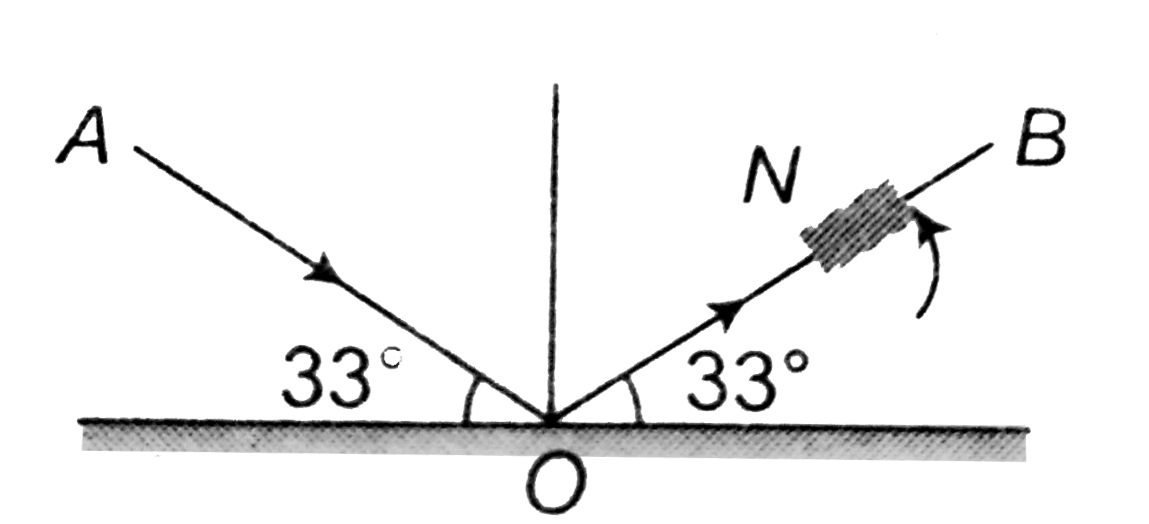Light transmitted by Nicol prism is,
partiallypolarised
unpolarised
plane polarised
elliptically polarised
The correct Answer is:C
Topper's Solved these Questions
- OPTICSBOOK - NCERT TAMILCHAPTER - OPTICSEXERCISE - EVALUATION (Numerical Problems)
10 Videos
- OPTICSBOOK - NCERT TAMILCHAPTER - OPTICSEXERCISE - EVALUATION (Numerical Problems)
10 Videos
- NUCLEIBOOK - NCERT TAMILCHAPTER - NUCLEIEXERCISE - ADDITIONAL EXERCISES
9 Videos
- RAY OPTICS AND OPTICAL INSTRUMENTSBOOK - NCERT TAMILCHAPTER - RAY OPTICS AND OPTICAL INSTRUMENTSEXERCISE - EXERCISES
40 Videos
Similar Questions
Refractive index of a prism is √73 and the angle of prism is 60∘. The limiting angle of incidence of a ray that will be transmitted through the prism is approximately
View SolutionRefractive index of a prism is √7/3 and the angle of prism is 60∘. The minimum angle of incidence of a ray that will be transmitted through the prism is
View Solution
Knowledge Check
Refractive index of a prism is √7/3 and the angle of prism is 60∘. The minimum angle of incidence of a ray that will be transmitted through the prism is
A30∘B45∘C15∘D50∘A beam of light AO is incident a glass slab (μ=1.54) in the direction show. The reflected ray OB is passed through a Nicol prism. On viewing through a Nicol prism, we find on rotating the prism that
 Athe intensity is reduceed down to zero and remains zeroBthe intensity reducees down somewhat and rises againCthere is no change in intensityDthe intensity gradually reduces to zero and then again increases
Athe intensity is reduceed down to zero and remains zeroBthe intensity reducees down somewhat and rises againCthere is no change in intensityDthe intensity gradually reduces to zero and then again increasesA beam of light AO is incident on a glass slab (μ=1.54) in a direction as shown in figure. The reflected ray OB is passed throught a Nicol prism. On viewinf through a Nicole prism, we find rotating the prism that (tan−11.54=57∘)
 Athe intensity is reduced down to zero and remains zeroBthe intensity reduces down some what and rises againCthere is no change in intensityDthe intensity gradually reduces to zero and then again increases
Athe intensity is reduced down to zero and remains zeroBthe intensity reduces down some what and rises againCthere is no change in intensityDthe intensity gradually reduces to zero and then again increases
Three nicols prisms are placed such that, first and third are mutually perpendicular. Unpolarised light is incident on first nicol's prism, the intensity of light emerges from third nicol's prism is 1/16 the intensity of incident light. Find the angle between first and second nicol's prisms.
[22.5∘]
View SolutionTwo nicols are so oriented that the maximum amount of light is transmitted. To what fraction of its maximum value is the intensity of transmitted light reduced when the analyser is rotated through (i) 45∘ (ii) 90∘ (iii) 180∘. ?
View SolutionTwo nicols are so oriented that the maximum amount of light is transmitted. To what fraction of its maximum value is the intensity of transmitted light reduced when the analyser is rotated through (i) 30∘ (ii) 60∘ ?
View SolutionTwo nicols are so oriented that the maximum amount of light is transmitted. To what fraction of its maximum value is the intensity of transmitted light reduced when the analyser is rotated through (i) 30∘ (ii) 60∘ ?
View SolutionTwo nicols are so oriented that the maximum amount of light is transmitted. To what fraction of its maximum value is the intensity of transmitted light reduced when the analyser is rotated through (i) 30∘ (ii) 60∘ ?
View Solution
